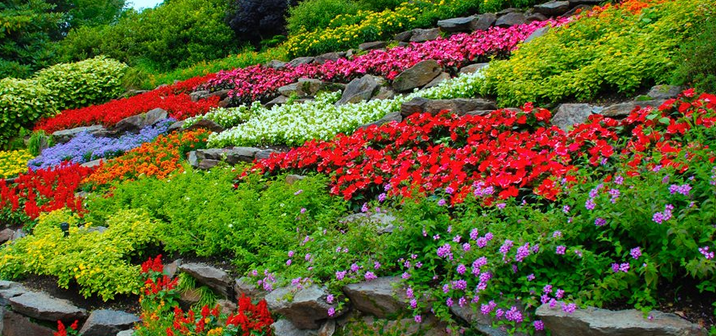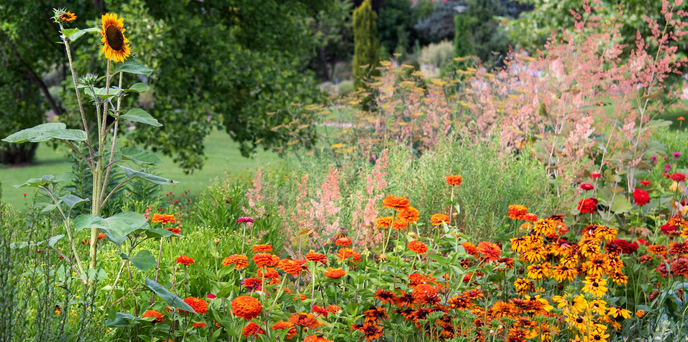|
Getting your Trinity Audio player ready...
|
A garden adorned with a variety of flowers is a delightful sight, offering a burst of color and a fragrant oasis. Whether you’re a seasoned gardener or a beginner, cultivating a vibrant flower garden requires a combination of knowledge, care, and creativity. Here are essential tips to create and maintain a flourishing garden that’s a feast for the eyes and a haven for the soul.

Choosing the Right Flowers for Your Garden
Select flowers that thrive in your climate and soil type. Consider factors such as sunlight, water requirements, and space availability. Opt for a mix of annuals and perennials to ensure continuous blooming throughout the seasons.
Planning and Designing Your Garden
Sketch a garden layout to visualize flower placements. Arrange flowers based on height, color, and blooming periods. Group complementary plants together to create stunning visual displays. Don’t forget to include pathways and focal points.
Preparation and Soil Enrichment
Moreover, prepare the soil by loosening it and removing weeds. Enrich the soil with organic matter like compost to provide essential nutrients. Healthy soil is the foundation for robust flower growth.
Planting with Care
Plant flowers at the recommended depth and spacing. Water the plants thoroughly after planting to help them establish their roots. Mulch around the plants to retain moisture, suppress weeds, and regulate soil temperature.
Watering Wisely
Water your flowers deeply but less frequently. Early morning or late afternoon is the best time to water, as it reduces water loss due to evaporation. Avoid wetting the foliage to prevent disease.
Fertilizing for Blooms
Use a balanced, slow-release fertilizer to nourish your flowers. Follow the recommended application rates and schedule. Over-fertilization can lead to excessive foliage growth and fewer blooms.
Pest and Disease Management
Monitor your garden regularly for pests and diseases. Choose natural methods like introducing beneficial insects or using homemade insecticidal soaps. Avoid chemical treatments that can harm pollinators.
Deadheading and Pruning
Remove spent flowers through deadheading to encourage new blooms. Prune your plants to promote healthy growth, shape, and to prevent overcrowding.
Companion Planting for Healthy Growth
Pair compatible flowers that benefit each other’s growth. For instance, marigolds can deter pests, and tall flowers can provide shade to shorter ones.
Attracting Pollinators
Create a pollinator-friendly environment by planting nectar-rich flowers. Bees, butterflies, and other pollinators are crucial for plant reproduction and garden health.
Seasonal Maintenance
Different flowers have different care needs. Adjust your care routine according to the changing seasons, from preparing for winter to spring cleanups.
Transitioning Between Seasons
As seasons change, remove fading flowers and replace them with ones suited for the upcoming season. This ensures your garden remains vibrant year-round.
Creative Garden Features
Enhance your garden’s appeal with creative features like trellises, arches, and decorative containers. These elements add charm and character to your floral paradise.
Sharing and Learning
Connect with other garden enthusiasts through local clubs or online communities. Share experiences, tips, and successes for mutual inspiration and learning.
Creating a Haven for Wildlife
Incorporate plants that attract birds, butterflies, and other wildlife to your garden. Native plants are particularly effective in supporting local ecosystems and providing food and shelter for various species.
Mulching Techniques
Aside from retaining moisture, mulch can also help suppress weeds and protect plants from temperature fluctuations. Use organic mulch like straw, wood chips, or leaves for a natural look and added soil enrichment.
Conclusion
Gardening with flowers is a rewarding endeavor that brings joy, beauty, and a sense of accomplishment. By choosing the right flowers, planning thoughtfully, and providing proper care, you can cultivate a vibrant garden that enchants the senses and provides a serene escape. Remember that gardening is an ongoing journey, and each season brings new opportunities to learn, experiment, and create your own flourishing oasis. Whether you have a sprawling backyard or a cozy balcony, the magic of gardening with flowers knows no bounds.

